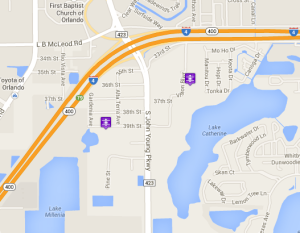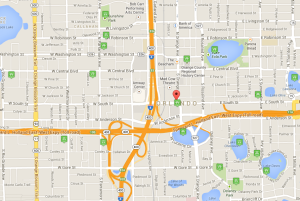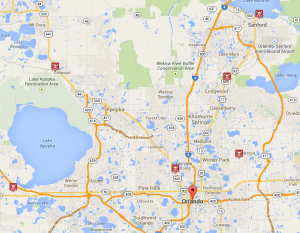Prisons, jails and work-release centers are prime examples of so-called unwanted land uses. Unsurprisingly, many home buyers and  renters try to avoid living in areas close to a correctional facility. The reasons are not hard to imagine – prospective residents fear a higher crime rate in neighborhoods near a prison and that they might have a hard time reselling their home. By looking at the MoversAtlas MoveMap you can see that neighborhoods close to prisons in Orlando, FL have median income and home ownership rates slightly lower than in other areas of the community. What’s interesting is that this link is not nearly as pronounced as might be expected.
renters try to avoid living in areas close to a correctional facility. The reasons are not hard to imagine – prospective residents fear a higher crime rate in neighborhoods near a prison and that they might have a hard time reselling their home. By looking at the MoversAtlas MoveMap you can see that neighborhoods close to prisons in Orlando, FL have median income and home ownership rates slightly lower than in other areas of the community. What’s interesting is that this link is not nearly as pronounced as might be expected.
The relationship between prisons, property values, crime rates and other statistics that affect homeowners is actually quite complex and a fair amount of debate revolves around the subject. As we discussed earlier, most peoples’ perception is that the presence of a prison in a community lowers property values, increases the crime rate and reduces quality of life for residents. However, at least one study conducted by Florida Atlantic University and Florida International University in conjunction with the US Department of Justice found that these beliefs are false.
The study examined 7 prisons across the country and using statistical techniques (a regression analysis) found that in all but one instance, the presence of a prison did not have a statistically significant effect on property values. Interestingly, Realtors were also surveyed about how the presence of a prison affected their ability to sell a home. Generally speaking, Realtors believed that correctional facilities had little to no impact on the sale price of a home and only two reported losing a sale due to the presence of a prison.
Likewise, the study found that prisons did not adversely affect residents’ quality of life or increase the crime rate (in many instances the crime rate was actually lower around prisons). Using the median income and home ownership figures on our MoveMap as a rough indicator of neighborhood economic health seems to confirm the study’s findings. Stay tuned, we’re working on adding parcel values to the MoveMap as well, so it will be interesting to see what actual home values look like in areas close to a correctional facility.
Now we’ll briefly discuss what types of correctional facilities are located in Orlando. Of the 6 points you can find on the map, 5 are work release centers and 1 is the Orange County Jail. Work release programs are designed to gradually reintegrate inmates back into the community by allowing them to work at legitimate jobs towards the end of their confinement.
Generally speaking, inmates convicted of the more serious violent crimes are not eligible for work release programs; only sufficiently trustworthy prisoners or those who can be adequately monitored are allowed to do work release (a full breakdown of who is/is not eligible can be found here: http://www.dc.state.fl.us/oth/inmates/wr.html). There aren’t any perimeter fences around work release centers, but inmates have to remain at the center when not working or attending programs like Alcoholics Anonymous. Inmates participating in work release are allowed to leave jail for a work and return to serve their time during the evenings or weekends. Below is an example of one of the work release centers in Orlando, Florida:
Bridges of Orlando is located at 2011 Mercy Drive Orlando, 32808. It is a work release center that specializes in treating people with substance abuse issues and drug related crimes. Their program entails interrupting chemical dependence, initiating physical and mental rehabilitation and implementing a long term recovery plan.
Jails are a bit different than work release centers as they are designed primarily to hold persons awaiting sentencing. Work release centers on the other hand, house inmates that have already been sentenced and in many cases are near the end of their confinement. Jails typically hold inmates for short periods of time, such as when they are awaiting a trial or serving a brief sentence of one year or less. Counties generally operate jails.
We hope that this blog post has been informative; if you’d like to see if there are any correctional institutions in your area, check out our MoveMap.



